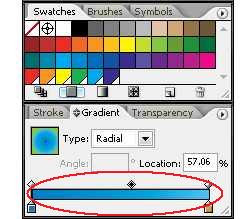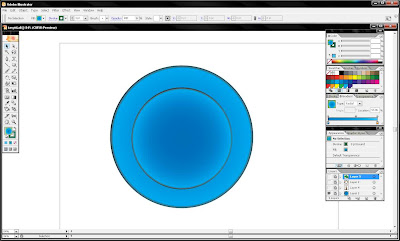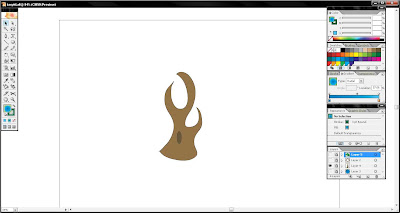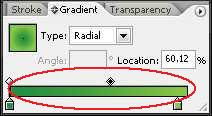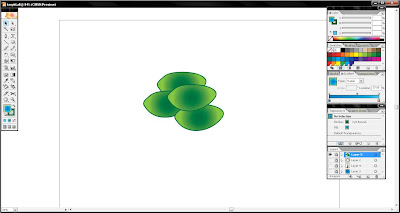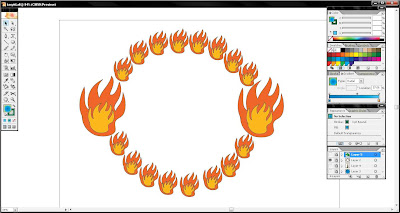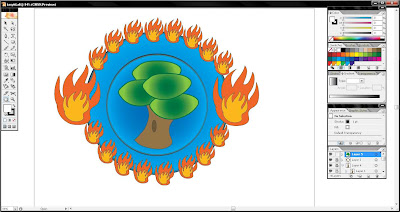What is global warming?
Earth's atmosphere contains certain gases called greenhouse gases (mostly water vapor and carbon dioxide) which act to keep the lower layers of the atmosphere warmer that they otherwise would be without those gases. “Global Warming” is the expected slow, gradual warming of the lower layers of the Earth’s lower atmosphere by the slowly increasing concentrations of man-made greenhouse gases, primarily carbon dioxide, and to a lesser extent methane. These gases trap infrared radiation, which is the “heat radiation” that cools the Earth. (In order for the Earth to remain at a constant temperature, the Earth must lose as much energy through infrared radiation as it gains from the sun. This concept is called energy balance.) The burning of fossil fuels, mainly petroleum and coal, produces carbon dioxide as one of the by-products. As of 2003, the concentration of carbon dioxide is over 50% higher than it was before the start of the industrial revolution in the late 1800's—-which is when the burning of fossil fuels really took off.
How serious will global warming be? We don't know for sure, and there is much debate in the climate research community over this very question. The consensus of opinion is that a warming of about 0.2 degrees Celsius (about 0.4 deg. F) every 10 years is expected for the next 100 years or so. The reason why there is so much uncertainty, though, is because weather acts to rid the surface of the earth of excess heat. The processes by which this happens are very complex, and usually involve water. For instance, clouds (on a whole) act to cool the Earth. How clouds will change with global warming will be critical, as they could either amplify the warming, or reduce it. The evaporation of water removes a huge amount of heat from the Earth’s surface, and this heat is deposited high in the atmosphere when rain clouds form. It is expected that “global warming” will be accompanied by small changes in rain systems. If those rain systems become more efficient at converting water vapor into precipitation, this would act to offset global warming. This is just one of the uncertainties in predicting how much global warming there will be. There are other uncertainties relating to possible changes in sea ice, snow cover, vegetation amount and type, and how much of the extra carbon dioxide will be absorbed by vegetation or by the ocean.

How much warming has there been so far? There seems to be pretty good evidence that globally-averaged temperatures have risen about 0.5 degrees Celsius (about 1 deg. F) in the last 100 years. But it is not known how much of this is due to man-made greenhouse gases, or to natural processes. The Earth goes through natural climate fluctuations without any help from mankind. It is reasonable to assume, however, that some portion of the warming in the last century is man-made.
Climate change is any substantial change in Earth’s climate that lasts for an extended period of time. Global warming refers to climate change that causes an increase in the average temperature of the lower atmosphere. Global warming can have many different causes, but it is most commonly associated with human interference, specifically the release of excessive amounts of greenhouse gases.
Greenhouse gases, such as carbon dioxide (CO2), methane (CH4), water vapor, and fluorinated gases, act like a greenhouse around the earth. This means that they let the heat from the Sun into the atmosphere, but do not allow the heat to escape back into space. The more greenhouse gases there are, the larger the percentage of heat that is trapped inside the earth’s atmosphere.
The earth could not exist in its present state (that is, with life) without the presence of some naturally occurring greenhouse gases, such as CO2, CH4, and water vapor. Without any greenhouse gases no heat would be trapped in atmosphere, so the earth would be extremely cold. Naturally occurring greenhouse gases (not fluorinated gases) are good in naturally occurring amounts; it’s when people start contributing excessive amounts of them that greenhouse gases become a problem. With excessive greenhouse gas buildup, the earth’s atmosphere warms to unnatural temperatures which causes, among other things, sea level to rise. Global warming also causes sea surface temperatures to rise, precipitation patterns to change.
Many greenhouse gases occur naturally, such as water vapor, carbon dioxide, methane, nitrous oxide, and ozone. Others such as hydrofluorocarbons (HFCs), perfluorocarbons (PFCs), and sulfur hexafluoride (SF6) result exclusively from human industrial processes.
Human Activities and Greenhouse Gases
Human activities also add significantly to the level of naturally occurring greenhouse gases:
- Carbon dioxide is released into the atmosphere by the burning of solid waste, wood and wood products, and fossil fuels (oil, natural gas, and coal).
- Nitrous oxide emissions occur during various agricultural and industrial processes, and when solid waste or fossil fuels are burned.
- Methane is emitted when organic waste decomposes, whether in landfills or in connection with livestock farming. Methane emissions also occur during the production and transport of fossil fuels.


 Figure 1.1
Figure 1.1 Figure 2.1
Figure 2.1 Figure 2.2
Figure 2.2 Figure 3.1
Figure 3.1 Figure 4.1
Figure 4.1



 Figure 1.1
Figure 1.1




